Darkfield Live Blood Microscopy Of A Discoid Mesogen Self Assembly Nanotechnology Device In C19 Unvaccinated Blood

ANA MARIA MIHALCEA, MD, PHD | Substack.com/@anamihalceamdphd
In this article, I would like to explain further the different self assembly nanotechnology for the human machine interface that has been deployed against humanity. This past week, I saw a particularly interesting specimen in one of my C19 unvaccinated patients, who has been exposed to extensive shedding and was having significant symptoms with cognitive decline, fatigue and accelerated aging. These disc shape structures are seen a lot more now, almost more so than the long filaments. I have written about mesogens as described by Dr Hildy Staninger in the 2011 paper:
She wrote:
“To understand the technology of mesogens and their multiple smart functional uses for sensing, payload delivery systems, and other related aspects of their design, one must always remember that the mesogen is the tool or device – like the wheel on a car for the nano machine. The nano machine can be designed to become the robot, surgical scalpel, camera, the voice within your skull, or even the “false” collective consciousness when integrated into a computer system for collective mind control or a “global brain.”
In other words, the mesogen has a host-parasitic relationship in which the parasite dominates, but the host usually survives. This statement is right on target for how the mesogenic liquid crystal phase, and its other nano architectural designed smart functions, would interact with the biological system of the human brain or other target organs of designed choice. Mesogenic payloads of liquid crystals can be unreactive until triggered into activation for their ultimate purpose. This is the new nano medicine, new smart WIFI communication system, weapon, industrial espionage device, or component for mind or body control devices.
The scientific literature discusses the layered self assembly of these mesogens, that are being build both via micellar ( spherical) and fibrillar self assembly:
Solution-state self-assemblies of block copolymers to form nanostructures are tremendously attractive for their tailorable morphologies and functionalities. While incorporating moieties with strong ordering effects may introduce highly orientational control over the molecular packing and dictate assembly behaviors, subtle and delicate driving forces can yield slower kinetics to reveal manifold metastable morphologies. Herein, we report the unusually convoluted self-assembly behaviors of a liquid crystalline block copolymer bearing triphenylene discotic mesogens. They undergo unusual multiple morphological transitions spontaneously, driven by their intrinsic subtle liquid crystalline ordering effect. Meanwhile, liquid crystalline orderedness can also be built very quickly by doping the mesogens with small-molecule dopants, and the morphological transitions are dramatically accelerated and various exotic micelles are produced. Surprisingly, with high doping levels, the self-assembly mechanism of this block copolymer is completely changed from intramolecular chain shuffling and rearrangement to nucleation-growth mode, based on which self-seeding experiments can be conducted to produce highly uniform fibrils.
Here are self assembly images:
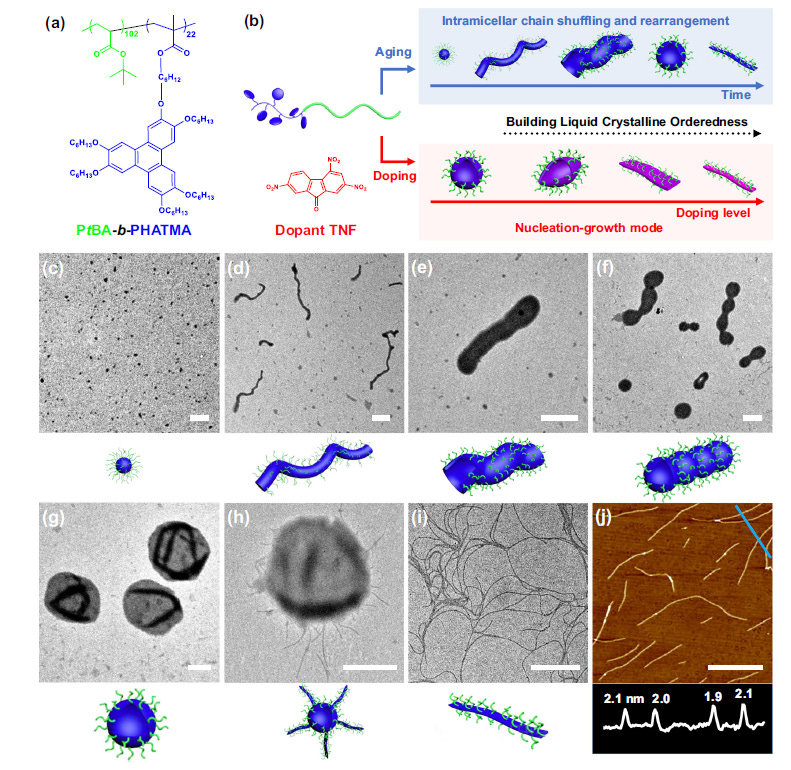

I have written in this article that Polyethylene Glycol self assembles via micellar and fibrillar growth into mesogens:
We describe in this Communication nanofibers and vesicles formed in water by two new amphiphilic LC block copolymers, in which the LC block is a polymer containing a cholesteryl-based mesogen and the hydrophilic block is again a poly(ethylene glycol).
You can see in multiple close ups the fibrills that are interwoven in the discoid structure that has micellar vesicles on the outside and contains many nano and micro robots:
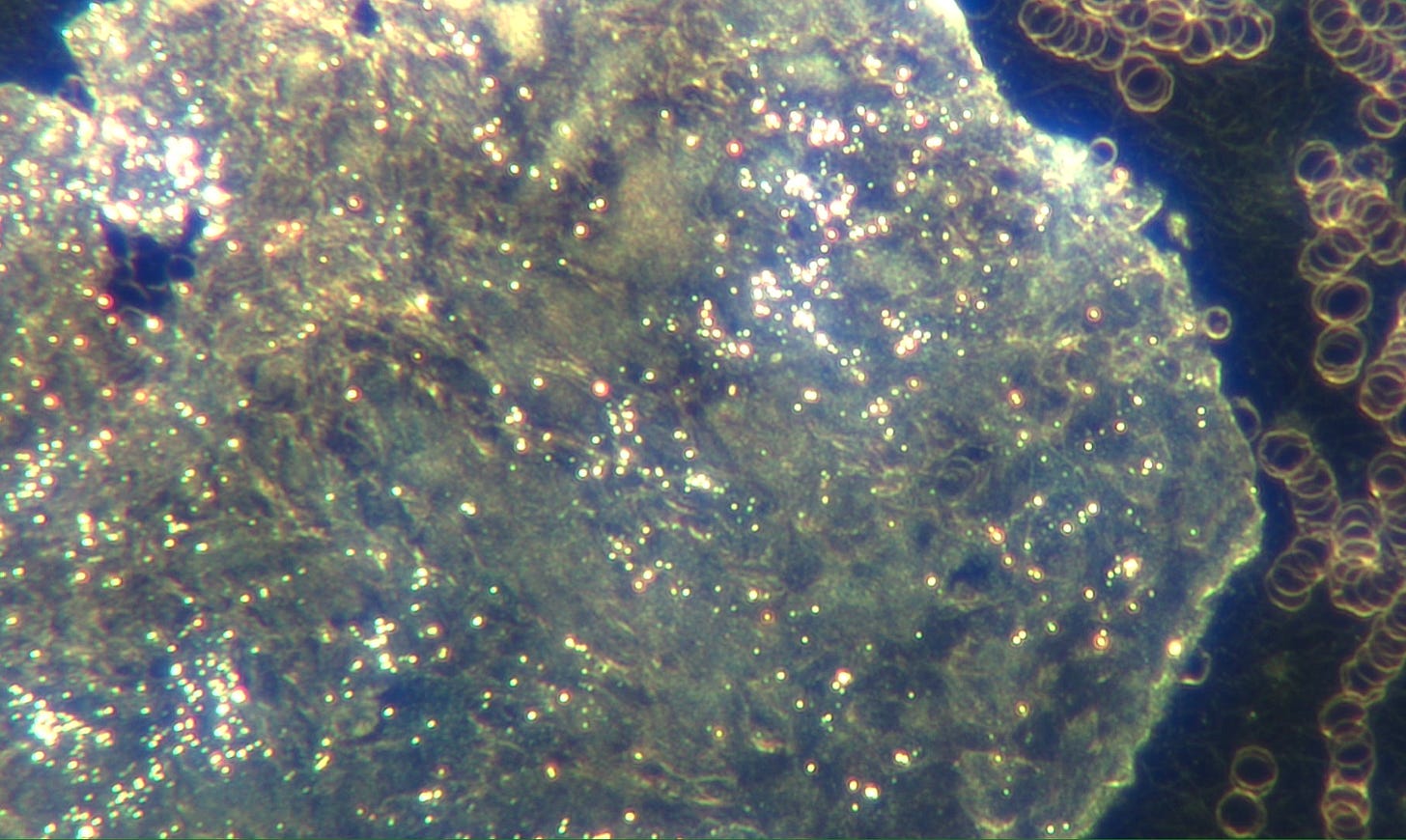
The next two images are 2000x magnification, the interconnecting fibrils are clearly seen. The comb like features is where the wavelength receiver functions, the many microbots cluster to create electronic circuits.
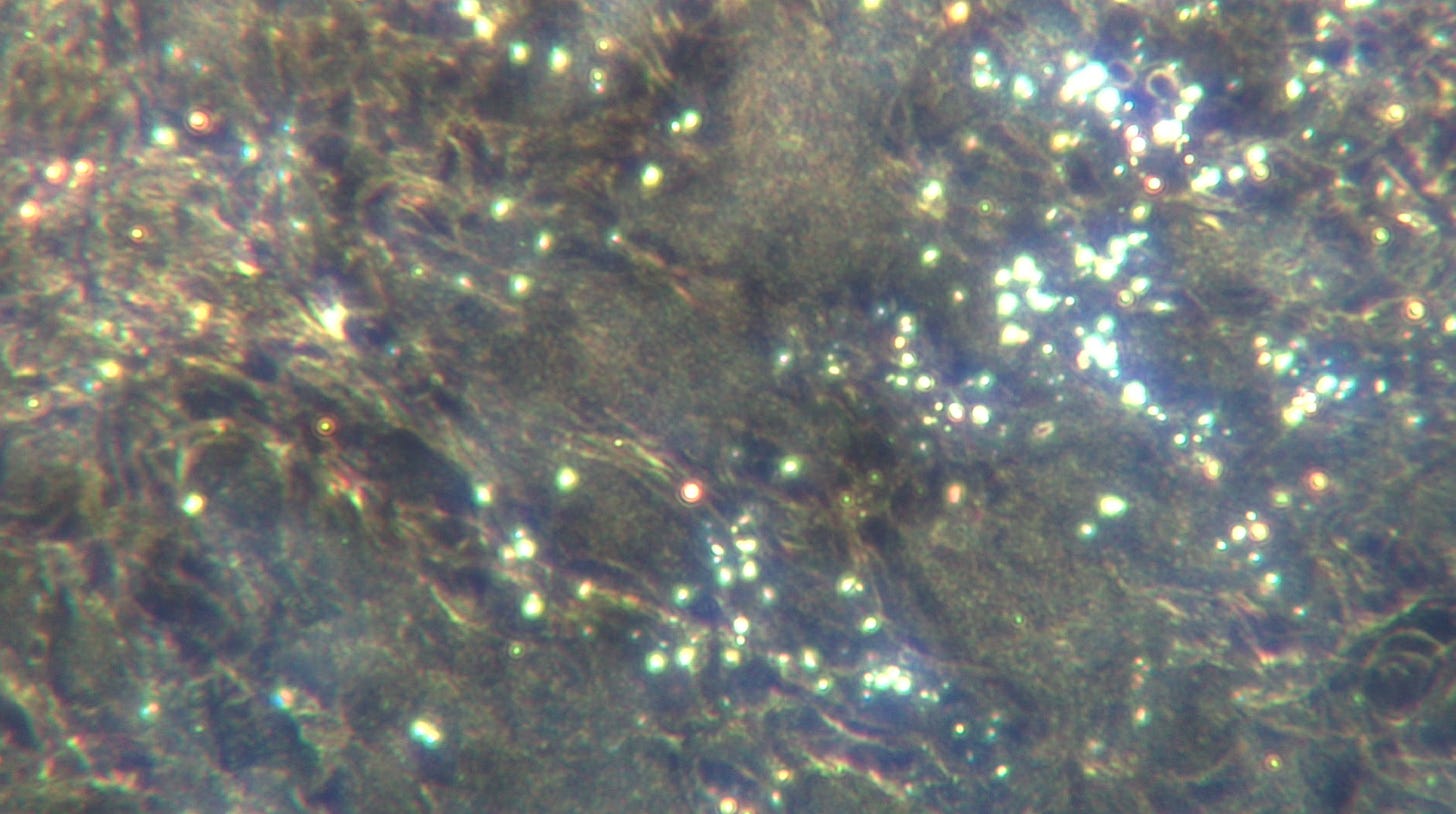
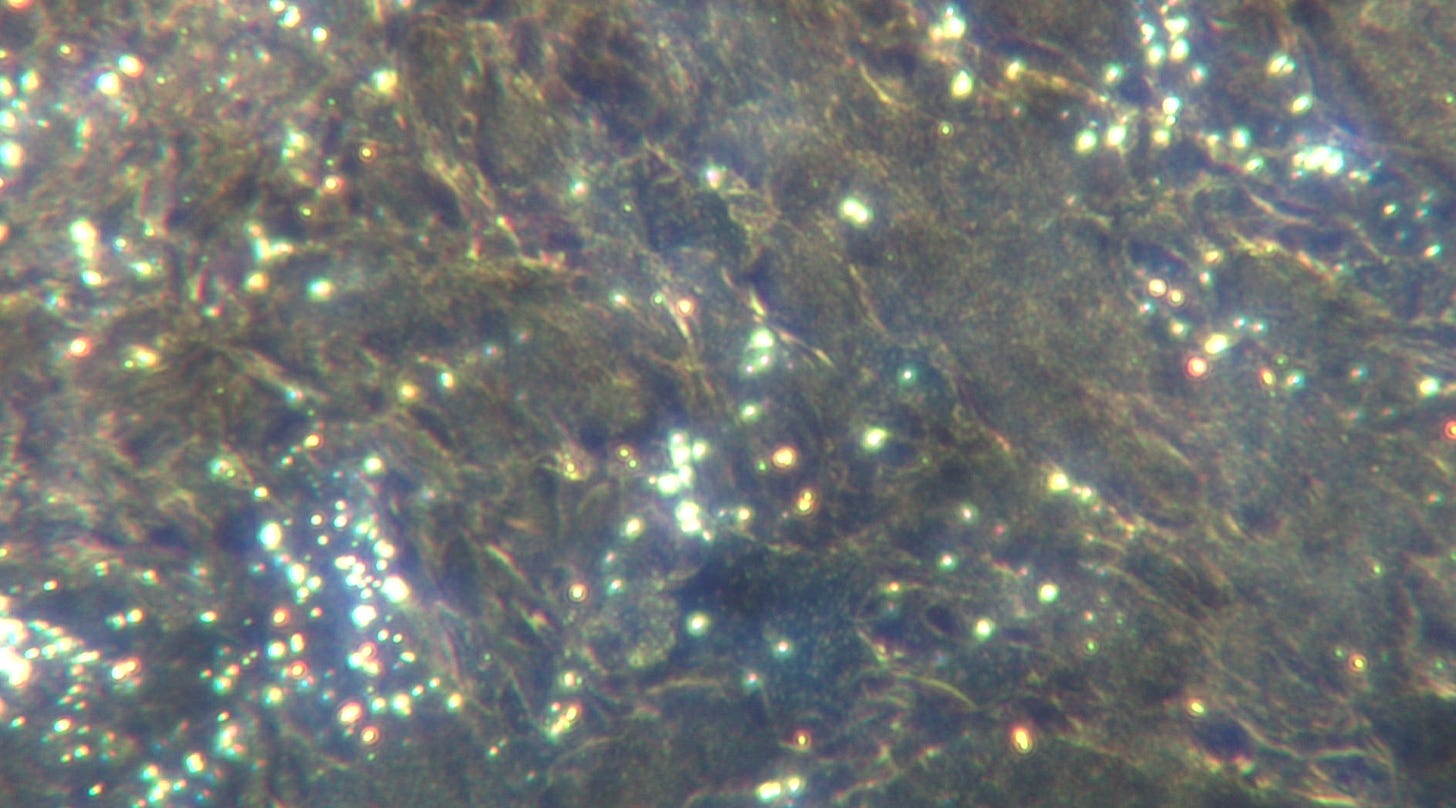
In the image below you can see that the aging of the micelle creates the fibrils:
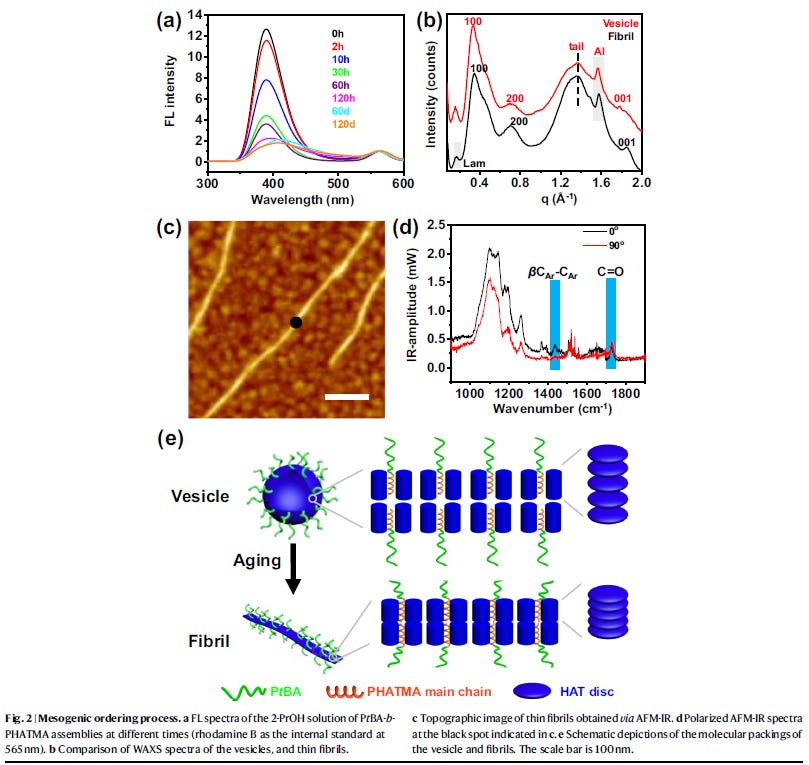
What can mesogens do? They exhibit semiconducting properties for electronic devices and photo luminescence ( light emission). We know that human physiology can be controlled via optogenetics, the effects of light on genetic expression.
The design and synthesis of new organic semiconductors with charge-transporting and self-organizing abilities is a constantly growing activity for the development of potentially new applications in the emerging field of organic electronics, as attractive new functional components for organic solar cells (OSCs), organic field-effect transistors (OFETs), and organic light emitting diodes (OLEDs) [1]. Of particular interest are the one-dimensional columnar liquid crystalline semiconductors formed by the regular stacking of discotic molecules into columns [2], [3], [4], [5]. Such discotic liquid crystals (DLCs) are usually composed of polyaromatic flat cores prone to stack in one direction, radially equipped with aliphatic chains to ensure fluidity and self-healing aptitude between the columns. The efficiency and type of carrier mobility depend on the extension of the conjugated system and the strength of the intermolecular interactions, whose electronic properties can be modulated by modifying the nature of the core or grafting electro-active substituents. Electron-donating polycyclic aromatic π-materials are hole transporters termed p-type semiconductors, while the π-materials made of electron-accepting aromatic π-materials are prone to electron-transport and are referred to as n-type semiconductors.
Here is a schematic of the mesogen layering process that can have up to 132 layers:
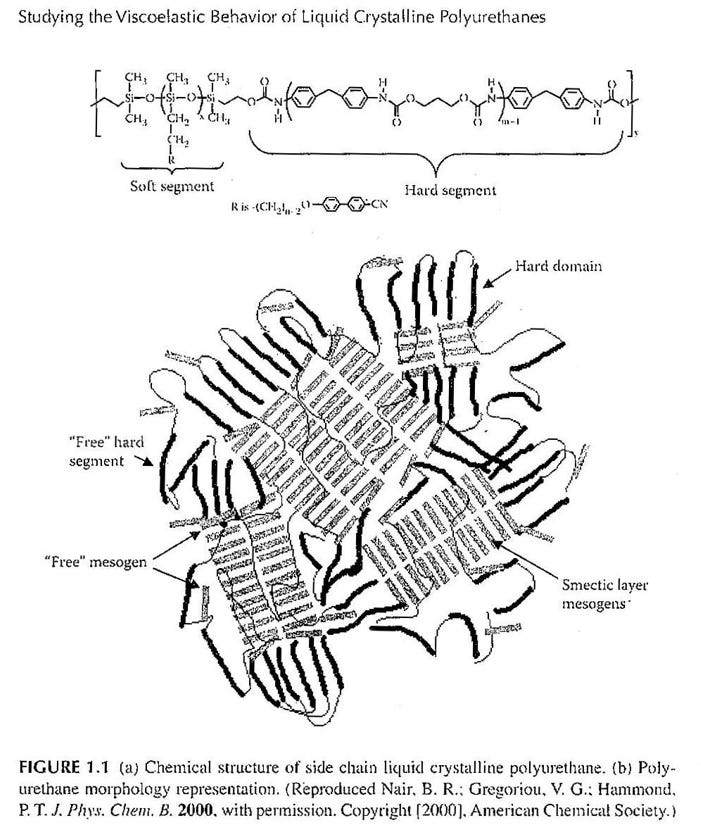
These mesogen structures are used to create soft robots:
Recent progress of morphable 3D mesostructures in advanced materials
Soft robots complement the existing efforts of miniaturizing conventional, rigid robots, and have the potential to revolutionize areas such as military equipment and biomedical devices. This type of system can accomplish tasks in complex and time-varying environments through geometric reconfiguration induced by diverse external stimuli, such as heat, solvent, light, electric field, magnetic field, and mechanical field. Approaches to achieve reconfigurable mesostructures are essential to the design and fabrication of soft robots.
The nanofibers within the structure enhance biosensing applications:
Nanofibers interfaces for biosensing: Design and applications
Electrospun nanofiber's engineering has emerged as a possible strategy to improve the performance of biosensor devices. These nanostructures present a high surface-to-volume ratio, interconnected porous structure, low barrier to diffusion, and adjustable surface functionality. Additionally, nanofibers have also been demonstrated to work efficiently as platforms to immobilize biomolecules, providing a suitable microenvironment to biologically active molecules, which is beneficial for biosensing performance
I have shown the self assembly of these mesogens and how the nano and microrobots are involved in their construction, while using our blood as the energy source:
Video: C19 unvaccinated blood. Nano and micro robots self assemble hydrogel biosensor mesogens in the blood.
I have recently posted two important summaries of research findings of self assembly nanotechnology documentation in human blood. This shows in many images how the mesogens are created.
Self Assembly Nanotechnology Live Blood Darkfield Microscopy: A Review in Images
Artificial Intelligent Transformation Of Humanity - Nano and Micro Robots In Human Blood
Summary:
The findings of self assembly nanotechnology in human blood are evolving, and clearly increasing in amounts of material seen in one drop of blood. Yesterday, I wrote about the concept of uncontrolled self replication in a biological system as discussed by Ray Kurzweil - on a physical individual and global level. The reaction of humanity to these findings is much too slow, much too apathetic. That in itself creates its own outcome. I highly recommend reading this article and contemplating the unconsidered consequences on a global scale of uncontrolled self replication of self assembly nanotechnology.
Original Article: https://anamihalceamdphd.substack.com/p/mesogen-self-assembly-nanotechnology

Comments ()